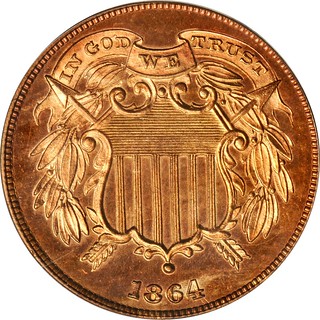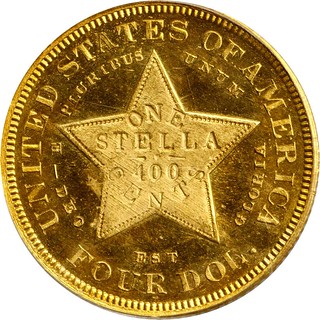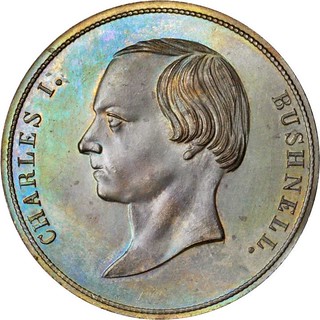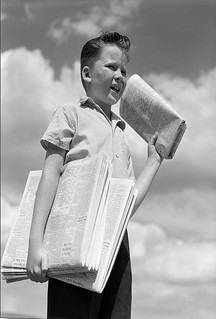
PREV ARTICLE
NEXT ARTICLE
FULL ISSUE
PREV FULL ISSUE
NOTES FROM E-SYLUM READERS: OCTOBER 27, 2019The Constitution and 'In God We Trust'
As a related issue, Article VI of our Constitution states that "...no religious Test shall ever be required as a Qualification to any Office or public Trust under the United States." So people can believe whatever they wish, but as citizens we are bound to obey the tenants of the most important legal document we have. One of my first coin show purchases as a young collector was a two-cent piece for my type collection. As a longtime collector of U.S. coins it's hard to imagine NOT having that motto around. The issue rears its head periodically and so far the legal challenges have been unsuccessful. I imagine someday it might actually find its way back to the Supreme Court for a decision. The final chapter on 'In God We Trust' may not have been written yet. But I'm eagerly looking forward to getting my copy of Bill's book to learn more about the origins of this familiar phrase on our money. -Editor To read the Wikipedia entry, see:
To read the earlier E-Sylum article, see:
Fact-Checking the Stella-Bordello Connection
Eric Schena submitted these notes on the purported use of $4 Stella coins as jewelry by Washington, D.C. madams. -Editor I saw the note regarding the $4 Stella Stack's Bowers Galleries has in the November Baltimore auction and thought I would drop a note since I wrote the historical description for that coin. I had heard about the purported brothel connection for decades ever since I first saw reference to it in Breen's encyclopedia. Sure enough, just checked my copy:
He even includes this note under #6408: "More than half the survivors show traces of cleaning or improper handling; many are frankly impaired; several dozen show solder residues from earlier use as jewelry (see introductory text), but their scandalous history keeps them in demand." Unfortunately, Breen makes no specific citations for the original newspaper stories and I couldn't find any such references in contemporary news accounts other than a few banal announcements of new bills authorizing the coins in Congress. Considering his sometimes rather questionable/exaggerated scholarship and the lack of reference to primary source materials, I chalked it up to artistic license or recounting a second- and third-hand story, so I have studiously avoided stating that story as fact. Makes for great copy but poor scholarship. There are certainly many impaired examples - I actually cataloged such an example in an earlier sale. The coin is a great candidate for jewelry: not too large and not too small, plus I can see how the large star makes it particularly appealing for that purpose. Interesting stuff and hopefully someday we can get to the source of that story. Thanks. It does make a great story, but it may only be that, at least until some contemporary documentation shows up. -Editor To read the earlier E-Sylum article, see:
Was Charles Ira Bushnell really an Uncle of the Chapman Brothers?
"I decided to look into the genealogy of Bushnell and the Chapman brothers but could not find the connection. The Chapmans’ parents were both said to be from Ireland and Bushnell was from an old New England family. I also attempted to look into Bushnell’s wife and the Chapmans’ wives but was not able to place the relationship. Can any readers provide additional information? " Another long-repeated "fact" that may or may not be true. Can anyone point to some evidence for this? Has the topic been researched before? According to Pete Smith's American Numismatic Biographies, "After his death his son offered the coin collection for sale at $10,000. Lorin Parmelee bought it for about $8,000. After skimming the collection, the remainders were consigned to the Chapmans for auction June 20-24, 1882." Had there been a prior family relationship I suspect the Bushnell collection would have gone directly to the Chapmans. Did a family connection materialize later? -Editor Pete Smith adds: "Charles Ira Bushnell was the only child of Giles and Ann Bushnell. Samuel Hudson Chapman and Henry Chapman were sons of Henry Chapman, Sr. and Jane Hudson Chapman. I have not found names of their brothers and sisters. At the moment I cannot confirm that Bushnell was an uncle of the Chapmans." To read the Bushnell ANB bio entry on the Newman Numismatic Portal, see:
More Paperboy Collecting Stories
Paul Peelle of Amherst, MA submitted this story of his paperboy experiences. Thanks! -Editor I just read "Paperboy Collecting Lessons" in the 9 October edition of The E-Sylum. Here is my story:
I lived in a very hilly area and had one customer who lived on a very steep hill. She always appreciated that I got her newspaper delivered to her front door nice and dry, even on days with such heavy snow that no car could make it up that hill (I left my bicycle at the bottom of the hill and walked up). Six days of delivery cost thirty cents; a few customers might give me an extra five-cent tip. This old-to-me woman, however, would give me a half dollar every Saturday. Almost always it was a Walking Liberty; otherwise it was a Franklin. Saving pennies for a collection was affordable; even though it was strain, I did put aside those Walkers—I really liked the design. No, I never received any 1921s. Duplicates and Franklins went into the bank, along with all of my other earnings. Between that and the money I earned from shoveling snow (no snow-throwers in those days!), I had enough to pay for my first year of college! But there is more. Since all I could afford to collect were the pennies and halves, I never looked at other coins that went through my hands before the bank. On one Saturday (collection day), my eye happened to be caught by this one particular five-cent piece. I could clearly see the S mint mark below the buffalo on the plain, and then flipping it over saw the bold 1913 date. I don't know why, but I decided to look it up in my Red Book. It had a value of $35. What should I do? I don't collect nickels. Maybe I could sell it, but I don't know how. I should probably just put it in the bank as usual. As I held it, I fell victim to the beauty of James Earle Fraser's design. And thus I expanded my collection to include Indian Head nickels. I eventually picked up the attractive Standing Liberty quarter dollars since it was a short series (with lots of holes). My paper carrier career afforded me the opportunity to search through a reasonable amount of change (without roll searching from banks) and build a relatively nice, strictly pocket-change collection. Thank you Long Island Press. Thanks - great story. I remember one Friday I was walking my route collecting payments. As I rang a doorbell a dog walked up on the porch beside me. The lady opened the door and the dog ran in. Before I could tell her how much she owed, she began yelling "Get your dog out of my house!!" MY dog?? I thought it was YOUR dog!! I went inside and chased it out for her. I started delivering around 1969 and while I did get some silver coins I don't recall ever getting any Walking Liberty or Franklin Halves, just Kennedys. To make paying my route manager easier I would take my change to a local store and they were happy to exchange the coins for bills. They would also save silver coins for me, which I bought at face value. Those were the days. -Editor To read the earlier E-Sylum article, see:
Wife's Coin Collection Plan
My wife has an evacuation plan for my coin collection if I pass on before her. It can be summed up in one word: "Coinstar" Ouch! Does the machine spit out the empty slabs? -Editor To read the earlier E-Sylum article, see:
 Wayne Homren, Editor The Numismatic Bibliomania Society is a non-profit organization promoting numismatic literature. See our web site at coinbooks.org. To submit items for publication in The E-Sylum, write to the Editor at this address: whomren@gmail.com To subscribe go to: https://my.binhost.com/lists/listinfo/esylum All Rights Reserved. NBS Home Page Contact the NBS webmaster 
|



